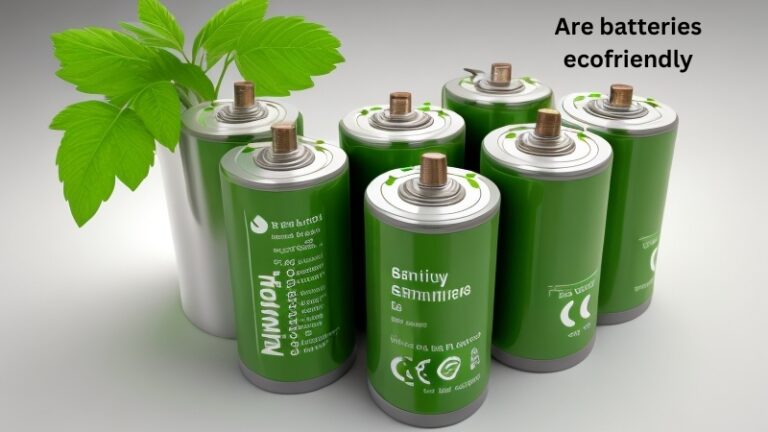What Do Eco Friendly Cars Run On?
Eco-friendly cars are gaining popularity due to their minimal impact on the environment. But what do these vehicles run on? The answer is simple: eco-friendly cars run on alternative fuels and advanced technologies that reduce emissions and promote sustainability. In this blog article, we will delve into the various fuel options for eco-friendly cars and explore how these vehicles are revolutionizing the automotive industry. So, if you’re curious about what do eco-friendly cars run on, keep reading to learn more about the exciting developments in this environmentally conscious field.
What do eco friendly cars run on
Eco friendly cars, also known as green or sustainable cars, are vehicles that aim to reduce their impact on the environment and improve fuel efficiency. These cars utilize alternative sources of energy to power their engines, significantly reducing greenhouse gas emissions compared to conventional gasoline or diesel vehicles. In this article, we will explore the various fuel sources that eco friendly cars run on, highlighting their benefits and drawbacks.
1. Electric powered cars
Electric cars, also known as electric vehicles (EVs), are gaining popularity as a sustainable transportation option. These cars are powered by rechargeable batteries and do not rely on fossil fuels. Here are some key points about electric vehicles:
- Electric vehicles produce zero tailpipe emissions, making them environmentally friendly.
- They are energy-efficient, converting the stored electricity into motive power with little energy loss.
- Charging an electric car can be done at home using a dedicated charging station or at public charging stations.
- While EVs have a limited driving range compared to traditional cars, advancements in battery technology are constantly improving their performance and range.
- The availability and accessibility of charging infrastructure is increasing, making electric vehicles more viable.
2. Plug-in Hybrid Electric Vehicles (PHEVs)
Plug-in hybrid electric vehicles, or PHEVs, combine the advantages of electric vehicles and internal combustion engine vehicles. PHEVs utilize rechargeable batteries as well as an internal combustion engine. Here’s what you need to know about PHEVs:
- PHEVs can operate purely on electric power for shorter distances, reducing emissions and providing fuel savings.
- When the battery charge depletes, the internal combustion engine takes over, allowing the car to continue its journey.
- This flexibility eliminates the issue of range anxiety associated with fully electric vehicles.
- PHEVs can be charged from an external power source or through regenerative braking, which converts kinetic energy into stored electric energy.
- Although PHEVs can reduce emissions, they still rely on fossil fuels when operating in hybrid mode.
3. Hydrogen Fuel Cell Vehicles (FCVs)
Hydrogen fuel cell vehicles, also known as FCVs, use hydrogen gas stored in onboard fuel cell stacks to produce electricity, which powers the electric motor. Here are some key features of FCVs:
- FCVs emit only water vapor as a byproduct, making them a zero-emission alternative.
- Refueling a hydrogen FCV is similar to refueling a gasoline vehicle, taking only a few minutes.
- Hydrogen fuel cell technology offers longer driving ranges compared to battery-powered electric vehicles.
- One challenge with FCVs is the limited availability of hydrogen refueling stations, which restricts their widespread adoption.
- Producing hydrogen gas requires energy-intensive processes, often relying on fossil fuels, which affects the overall environmental impact.
4. Biofuel-powered vehicles
Biofuels are derived from organic materials such as plants, algae, or waste. They can be used as an alternative to gasoline or diesel fuel, reducing carbon emissions. Here’s what you need to know about biofuel-powered vehicles:
- Some vehicles can run on biofuels alone, while others use a blend of biofuels and traditional fuels.
- Ethanol, derived from crops such as corn or sugarcane, is commonly used as a biofuel additive in gasoline vehicles.
- Biodiesel, made from renewable sources like vegetable oils or animal fats, can be used in diesel engines.
- Biofuels have lower greenhouse gas emissions compared to conventional fossil fuels, helping to reduce air pollution.
- However, concerns about land use, impact on food prices, and the energy required for production limit their widespread adoption.
5. Natural Gas Vehicles (NGVs)
Natural gas vehicles, or NGVs, utilize compressed natural gas (CNG) or liquefied natural gas (LNG) as their primary fuel source. Here are some key points about NGVs:
- CNG and LNG have lower carbon emissions compared to gasoline or diesel, contributing to a cleaner environment.
- NGVs produce fewer pollutants such as nitrogen oxides and particulate matter, improving air quality.
- Infrastructure for natural gas refueling is continuously expanding, providing greater accessibility for NGV owners.
- However, the limited range and availability of natural gas refueling stations can be a drawback.
- Conversion kits are available for some gasoline vehicles, enabling them to run on natural gas.
6. Solar-powered vehicles
Solar-powered vehicles utilize photovoltaic cells, commonly known as solar panels, to convert sunlight into electrical energy. Here’s what you need to know about solar-powered vehicles:
- Solar panels integrated into the car’s body or placed on the roof collect sunlight and charge the vehicle’s battery.
- They provide an additional source of power, reducing reliance on the electrical grid or other fuel sources.
- Solar-powered vehicles are most suitable for shorter distances and lower speeds due to limited surface area for solar panels and energy storage capacity.
- Advancements in solar technology are continuously improving efficiency, making solar-powered vehicles more practical.
- However, solar power alone may not be sufficient to meet all the energy requirements of a vehicle, especially for longer trips.
7. Ethanol and flex fuel vehicles
Ethanol, also known as ethyl alcohol, can be used as an alternative or additive to gasoline. Some vehicles are specifically designed to run on ethanol, while others are flex fuel vehicles (FFVs) capable of using a range of ethanol-gasoline blends. Here’s what you need to know:
- Flex fuel vehicles can handle varying ethanol-gasoline blends, such as E85 (containing 85% ethanol) or lower ethanol concentrations.
- Ethanol is primarily produced from corn or sugarcane, providing a renewable energy source.
- Using ethanol in vehicles reduces carbon monoxide and greenhouse gas emissions compared to gasoline.
- However, ethanol production requires significant amounts of water, fertilizers, and energy, impacting overall sustainability.
- The availability of ethanol refueling stations varies by region, limiting the widespread adoption of ethanol-powered vehicles.
8. Air-powered vehicles
Air-powered or compressed air vehicles utilize compressed air stored in a tank to drive the engine. Here’s what you need to know about air-powered vehicles:
- Compressed air vehicles produce zero tailpipe emissions, offering a clean and sustainable transportation option.
- They have lower manufacturing costs compared to electric or hydrogen vehicles.
- Refueling can be done at dedicated air stations, which can recharge the compressed air within a few minutes.
- However, limited energy density and the need for frequent refueling restrict the range and practicality of air-powered vehicles.
- Although suitable for short distances and low speeds, they may not be suitable for longer trips or high-speed highways.
9. Flywheel-powered vehicles
Flywheel-powered vehicles use a mechanical gyroscope-like device called a flywheel to store and release energy. Here’s what you need to know about flywheel-powered vehicles:
- The flywheel spins at high speeds, storing kinetic energy when the vehicle decelerates and releasing it when the vehicle accelerates.
- It can supplement the vehicle’s primary power source, reducing fuel consumption and emissions.
- Flywheel-powered vehicles are most suitable for stop-and-go city driving, where frequent acceleration and deceleration occur.
- However, flywheel systems can be bulky, impacting vehicle design and limiting their widespread adoption.
- Advancements in materials and technology are continuously improving the efficiency and practicality of flywheel-powered vehicles.
10. Human-powered vehicles
Human-powered vehicles rely entirely on human energy for propulsion. Here are some examples of human-powered vehicles:
- Bicycles and tricycles are the most common human-powered vehicles, providing an environmentally friendly and healthy mode of transportation.
- Manual hand-cranked vehicles, such as wheelchairs or hand cycles, are designed for individuals with mobility impairments.
- Human-powered vehicles have zero emissions, promote physical activity, and can be a practical solution for short distances.
- However, they are limited in terms of speed, range, and carrying capacity compared to motorized vehicles.
- Human-powered vehicles are most suitable for urban environments or areas with dedicated infrastructure for cyclists.
Hybrid Vehicles How They Work | TechForce Foundation
Frequently Asked Questions
What do eco friendly cars run on?
Eco-friendly cars primarily run on electricity or a combination of electricity and an alternative fuel source such as hydrogen or biofuels.
How do electric cars work?
Electric cars run on electricity stored in a battery pack. They have an electric motor that converts this stored energy into mechanical power, allowing the vehicle to move.
What are the benefits of electric cars?
Electric cars offer several benefits, including reduced greenhouse gas emissions, improved air quality, lower operating costs due to cheaper electricity prices, and quieter operation compared to traditional combustion engine vehicles.
What are hybrid cars and how do they work?
Hybrid cars combine an internal combustion engine with an electric motor and battery. They can use both electricity and gasoline to power the vehicle, with the electric motor providing additional power and improving fuel efficiency.
What are the advantages of hybrid cars?
Hybrid cars offer the advantages of lower fuel consumption, reduced emissions, and increased fuel efficiency compared to conventional gasoline-powered vehicles. They also provide the flexibility to switch between gasoline and electricity as power sources.
What is the role of hydrogen in eco-friendly cars?
Hydrogen fuel cell vehicles use hydrogen to generate electricity, which powers an electric motor. These cars emit only water vapor as a byproduct, making them a zero-emission alternative to traditional gasoline-powered vehicles.
What are biofuel-powered cars and how do they contribute to sustainability?
Biofuel-powered cars use renewable fuels derived from plant or animal matter. These fuels, such as ethanol or biodiesel, can be blended with gasoline or used as a substitute fuel. Biofuels help reduce greenhouse gas emissions and promote the use of sustainable resources.
Final Thoughts
Eco-friendly cars, also known as green cars or environmentally-friendly vehicles, rely on alternative fuels or advanced technologies to reduce their impact on the environment. These vehicles can run on a variety of fuel sources such as electricity, hydrogen, biofuels, and natural gas. Electric cars, for instance, run solely on electricity stored in onboard batteries, while hybrid cars combine an internal combustion engine with an electric motor. Hydrogen fuel cell vehicles use hydrogen gas to produce electricity, emitting only water vapor as a byproduct. By diversifying fuel sources, eco-friendly cars contribute towards reducing emissions and promoting a cleaner and sustainable transportation system. What do eco-friendly cars run on? A mix of innovative and eco-conscious energy solutions that are driving us towards a greener future.


